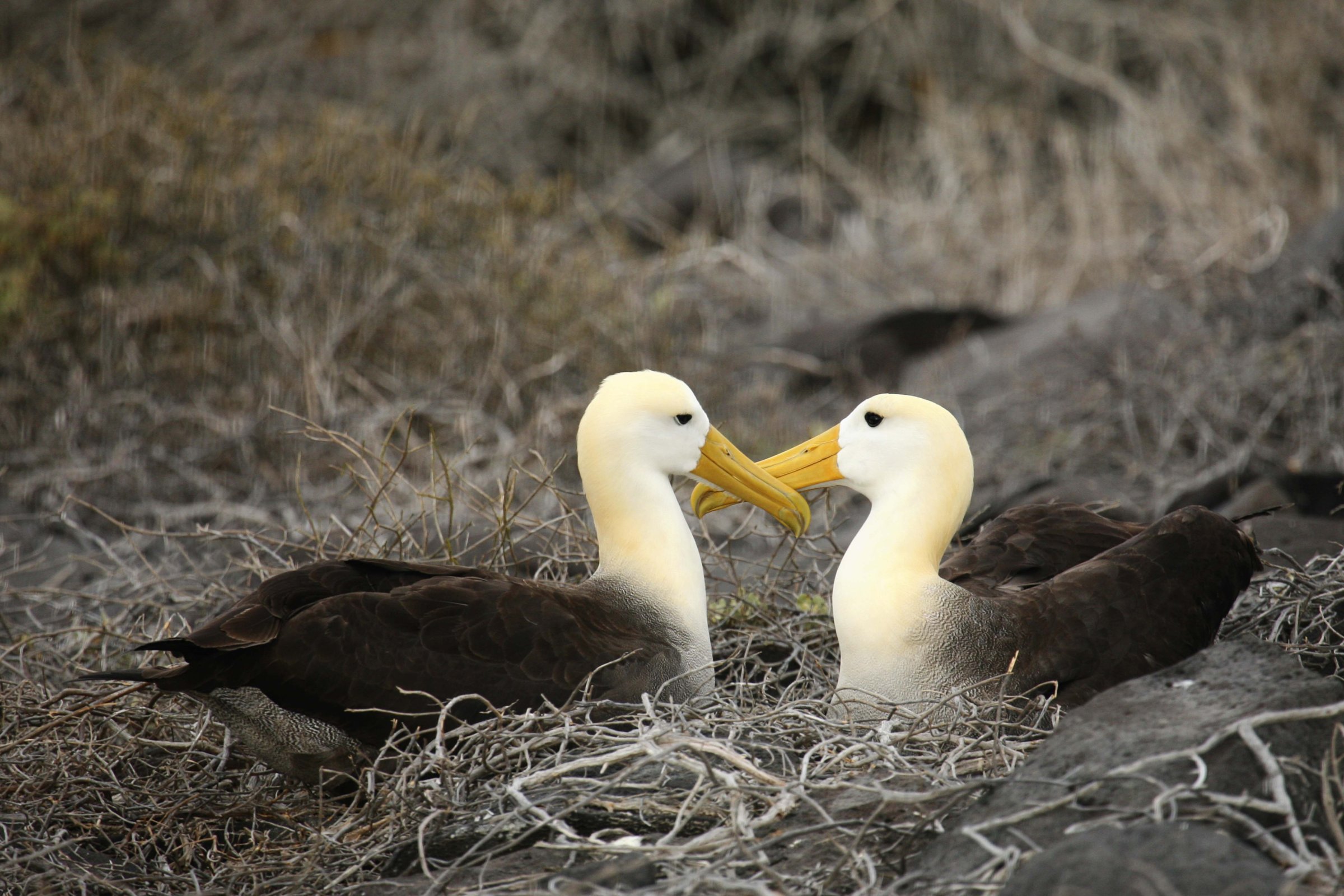
Zócalo Public Square is a magazine of ideas from Arizona State University Knowledge Enterprise.
On Valentine’s Day, our thoughts inevitably turn to the birds and the bees. And as someone who studies birds, I can tell you our feathered friends have much to teach us about courtship and sanity.
Take hummingbirds, for example: If you know anything about them, you might think it would be a pretty cool existence.
Hummingbirds are the only birds that can fly backwards. They’re the fighter jets of the bird world. But have you ever watched hummingbirds fight with each other? They’re vicious.
At my home in Oregon, my backyard is visited by Rufous Hummingbirds during the summer, and I have to put out three different feeders so that three male hummers can stake out territory around the yard. They won’t tolerate each other at all.
Why are hummingbirds so mean? Only the greediest survive.
If hummingbirds were any smaller, they couldn’t physically eat enough to stay warm. Sharing your food might mean the difference between life and death. And if they slow down even for one minute, they risk running out of calories.
Males and females can’t even get along enough to raise their children together. Mating takes about a second, then the female retreats to build a nest and raise the chicks all on her own. Does this sound like a life you’d want to have?
If I were given the choice to become any bird in the world, I’d be an albatross.
Just imagine having all the time in the world to put out your wings and glide indefinitely. Albatrosses have the lowest cost of flight of any bird.
When an albatross is gliding on the wind, it has a lower resting heart rate than when it is sitting on the water. So they stay in the air, and fly, and keep flying.
By the most conservative estimate, the average Wandering Albatross will fly several million miles in its lifetime—mostly alone.
With all this time alone, you might think that albatrosses have sacrificed something in their love lives, but nothing could be further from the truth.
When I visited Black-browed Albatrosses in the Falkland Islands, off the tip of South America, it was a moving experience. Up close, these birds are huge, and they just feel, well, incredibly calm and collected.
They truly do mate for life: So-called divorce rates in albatrosses have been measured at near zero percent. Pairs stay together until one of them dies—they’re the most committed lovers of any bird. Human divorce rates around the world hover near 40 percent.
Like us, albatrosses take a long time to pick a partner. When they’re a few years old, they return to their nesting colony and begin to perform elaborate dances with prospective mates, at first in small groups, then, gradually, with fewer and fewer partners, until each bird dances with only one other, which will become its mate. At that point, they pretty much quit dancing and move on with their lives.
It’s humbling to watch a pair of albatrosses in their nest. They snuggle, preen each other tenderly, and gaze into each other’s eyes, just as you would imagine from a pair of lovebirds. The oldest known albatrosses are still raising chicks with their partners into their 60s.
Do these birds actually experience love like we do? Well, I think so. Since love is really just a flood of chemicals released in the brain, there is no reason this feeling should be limited to humans.
Love serves a practical purpose: It helps parents and families stick together. The same evolutionary forces that acted on us, and made us fall in love, have also acted on albatrosses, which live a long time, don’t have many children, and put a lot of effort into their offspring.
And if this kind of devotion comes with a life of calm and a bird’s eye view of the entire world, what’s not to love?
Noah Strycker is the associate editor of Birding magazine, and the author of Among Penguins (2011) and The Thing With Feathers (2014). In 2015, he is on a quest to be the first person to see half the world’s bird species—5,000—in a single calendar year. He wrote this for Zócalo Public Square.
More Must-Reads from TIME
- Cybersecurity Experts Are Sounding the Alarm on DOGE
- Meet the 2025 Women of the Year
- The Harsh Truth About Disability Inclusion
- Why Do More Young Adults Have Cancer?
- Colman Domingo Leads With Radical Love
- How to Get Better at Doing Things Alone
- Michelle Zauner Stares Down the Darkness
Contact us at letters@time.com